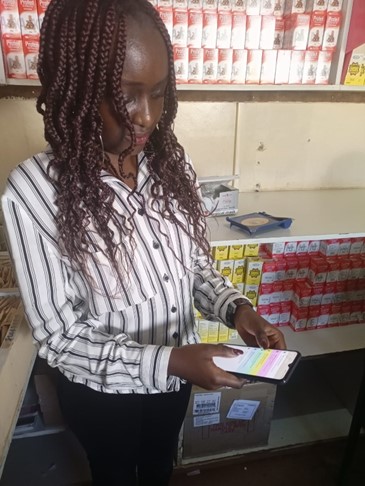Strengthening Pharmacovigilance to Improve Product Safety Surveillance and Reporting in Kenya
Background
Safety surveillance following the market authorization of health products and technologies (HPTs), along with ongoing quality and effectiveness monitoring and reporting, are an integral part of the health care system. However, Kenya in the past has experienced irregular and infrequent reporting of adverse events following immunization (AEFIs) to the national pharmacovigilance system maintained by the Pharmacy and Poisons Board (PPB). Limited access to reporting tools by health care professionals and members of the public alike, a tendency to misplace manual reporting forms before the data they contain is uploaded to the web-based Pharmacovigilance Electronic Reporting System (PvERS), and inadequate knowledge on the use of that system were all major factors contributing to the challenges.
To improve patient safety, policies, procedures, and systems need to be in place to support pharmacovigilance―activities relating to the detection, assessment, understanding, and evaluation of adverse effects or other HPT-related problems. Moreover, HPTs must be handled in compliance with applicable laws and regulations. The US Agency for International Development (USAID) Medicines, Technologies, and Pharmaceutical Services (MTaPS) Program is collaborating with the PPB to strengthen pharmacovigilance systems and improve safety surveillance and the reporting of health product-related problems, including AEFIs. Vaccine safety monitoring enables the early detection, investigation, and analysis of AEFIs, as well as adverse events of special interest.

A health care worker interacting with the mPvERS application. Photo credit: Barbara Jepkorir
Development of mPvERS
In 2021, Kenya upgraded PvERS―which was developed with support from a USAID-funded predecessor program, the Systems for Improved Access to Pharmaceuticals and Services―to include the reporting of AEFIs, medication errors, transfusion reactions, and medical device incidents. MTaPS in 2022 supported PPB in developing a mobile Pharmacovigilance Electronic Reporting System (mPvERS), which interlinks with PvERS and allows for the real-time transmission of pharmacovigilance reports from handheld mobile devices, thereby enabling even users from remote parts of the country to easily access the system. The PPB, with MTaPS support, trained health care workers on using mPvERS to send the safety reports and designed, printed, and disseminated brochures and posters targeting health care workers and members of the public with information on how to use the app.
The benefits of mPvERS include:
- Members of the public can easily report adverse effects or suspected poor-quality health products and technologies, at their convenience.
- Filing electronically saves paper and thus is environmentally friendly.
- The app is available in both Android and IOS platforms.
- The app can be used in resource-constrained areas.
- Users receive instant feedback on the status of their submissions.
- Real time visual reports show trends, such as the number of AEFIs reported related to COVID-19 vaccines.
Complementary Surveillance Activities
In addition to mPvERS, MTaPS supported the PPB and the National Vaccines and Immunization Program in the design and implementation of passive (routine information gathered from health facilities and members of the public) and active (collection of case-study information as a continuous pre-organized process) surveillance. The focus was on improving safety surveillance of AEFIs in relation to the COVID-19 vaccine.
An Integrated Pharmacovigilance System
The reports received from the national pharmacovigilance system will feed into the National Regulatory Authority and inform policy changes aimed at improving patient safety, including through a review of treatment guidelines and various regulatory actions and interventions in the country.